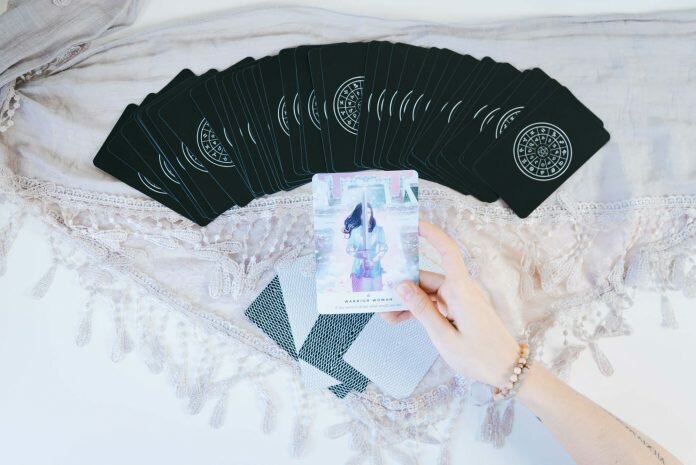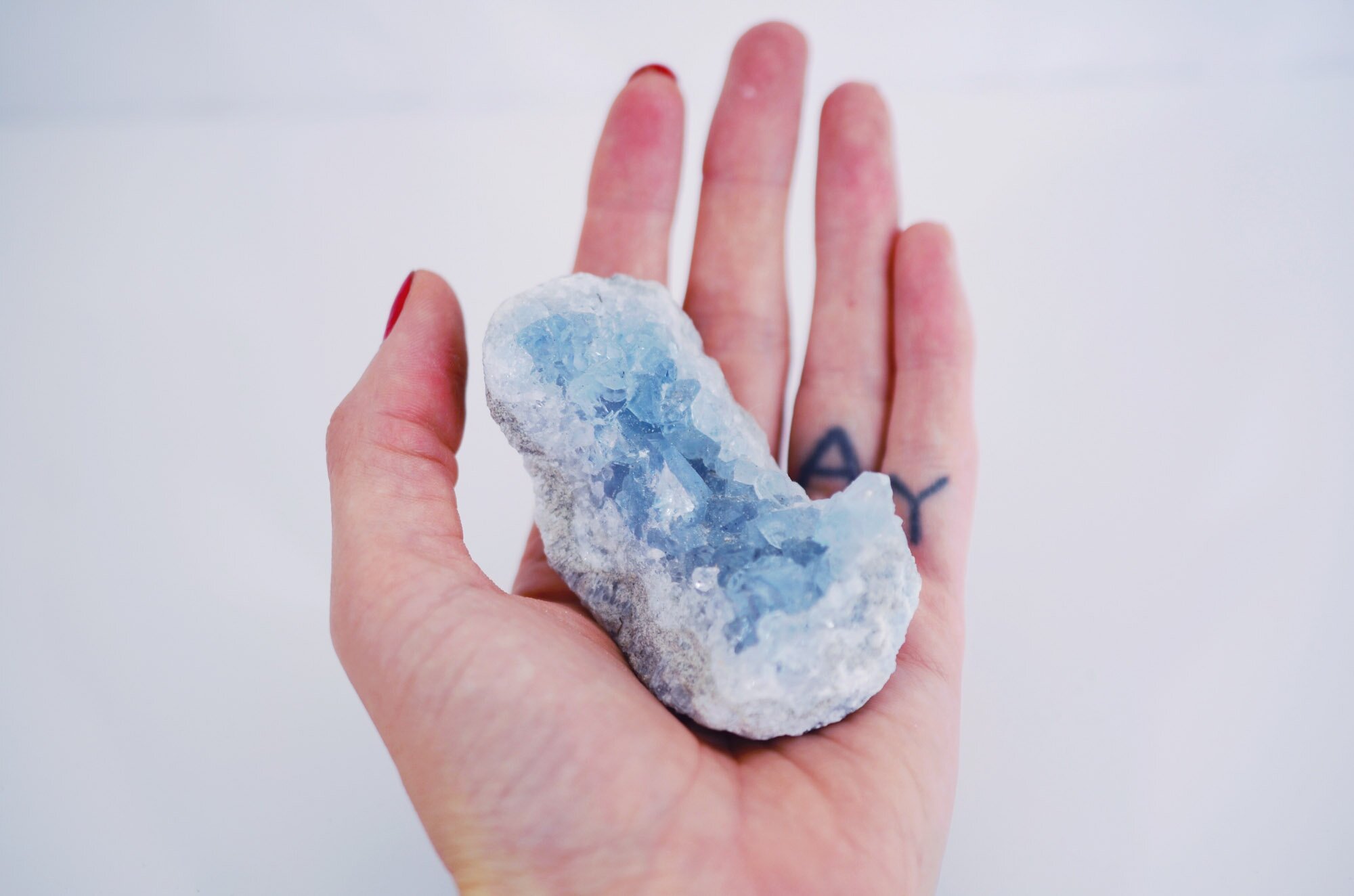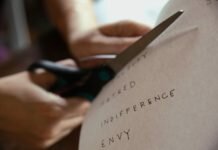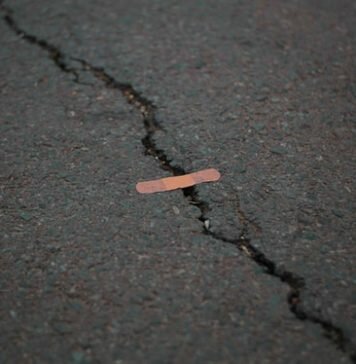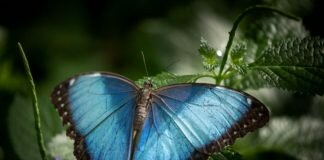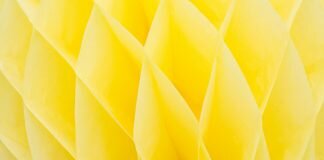I grew up deeply steeped in the New Age spirituality of the late ’70s and early ’80s. At a young age, I practiced meditation and yoga. I believed in karma, numerology and a list of other modalities before they were the territory of Instagram influencers and celebrities.
“You’re crazy!” My father and my two brothers would call my mother, jokingly or seriously depending on the day. It was a constant refrain. Even though I was only three or four, I already knew that my mother’s mother was labeled “crazy,” institutionalized and died. More than anything else in the entire world, I did not want my mom to go crazy and die. This specific fear followed me to playdates and to kindergarten. It kept me up at night and did not leave me for decades.
My mother found her Self, with a capital S, when I was a little kid. She attended a Human Potential training, called Lifespring, and then went on to become a trainer there. All kinds of New Age spirituality braided itself into our daily routines. Never wanting to be left behind, I came along for the ride.
Spirituality was the drug of choice. Finding the next thing, moving forward and spiritually evolving was the necessary fix. After tarot, runes. After runes, numerology. Wash it all down with a glass of freshly juiced carrots.
Young and full of emotion, I was encouraged to meditate, attend Lifespring, pick up A Course in Miracles, find outlets for all these outsized feelings. I was the first one in my family who was allowed the space to truly have feelings, not only be seen and not heard, and so the natural size of them felt enormous and unwieldy to the grown-ups in my life.
“You have anger. I can feel it,” a practitioner told me as she drew my aura, all tans and earth tones.
When I was around four years old, my mother walked in on my father and me taking a shower together. “What are you doing?” she was able to sputter out.
“We’re playing trolley,” he said, as if it were the most natural thing in the world for a man and his daughter to be showering naked, his penis in her hand. My mom rushed out, closing the door behind her. She couldn’t yet recognize this childhood trauma in herself. She certainly couldn’t name it for me. We behaved for decades like this moment never happened. Instead we focused solely on ourselves and our path toward enlightenment.
I wanted to see love and light, the words that were thrown around as casually as please and thank you. I became convinced the fault was my own because I could twist anything into self-condemnation, even “Be the change you want to see in the world.”
Everyone else saw love and light and claimed to feel the peaceful and accepting arms of God or Mother Earth or the Holy Spirit, so what was wrong with me?
“You’re angry because you haven’t forgiven yourself. Forgive yourself, it has brought me so much peace.” My mom and her friends would say.
I didn’t yet have the skills to ask: What do I have to forgive myself for? For being a child? For trusting? For having no choice but to put my life in your hands? Instead of contemplating those unasked questions, I followed my mom. My father was never a real option. I may not have given words to what happened but I never felt safe around him. It was my mom or nobody.
My mother repeated the 365 days of meditations in the Course countless times. It was only a matter of time before I joined her. I understand now that most children were not reading and meditating to books channeled by Jesus. I was not most kids, and that was only beginning to dawn on me. I spent my energy at school trying to leave behind what was happening at home. My drug-dealing brother, my money-laundering father, my New Age mom who used to be Jane but was now Zorah. In my short life, I’d already become a master of compartmentalization. I excelled in school and believed that if I could only be perfect there, it might ebb into the rest of my life. It didn’t.
When my mom first started doing the Course, she laid down in bed for more than a year. As an adult who’s accessed trauma therapy and Al-Anon I am now able to call it what it was: a nervous breakdown. That is not what we called it then.
The Course became the answer. Meditation and contact with the Holy Spirit catalyzed healing. Forgiveness of one’s self and abolition of one’s ego was the way forward.
When my father would forget my best friend’s name, again, I’d feel my anger bubble up. I didn’t say anything, instead I told myself, “I forgive myself for ignoring others. I forgive myself for feeling anger.”
When I’d feel overcome with grief and sadness at how emotionally distant we all were from one another, I’d tell myself, “I forgive myself for my sadness. I forgive myself for my inability to accept.” Instead of giving me relief, the forgiveness meditations put me on a hamster wheel of self-loathing. Basically, if I felt anything negative, I would forgive myself and pray for the death of my ego because I believed my ego was the root of my pain.
When I was 17, I was still using these techniques to master myself and my emotions. I found some comfort in my self-righteous belief that I was further on the path of spiritual enlightenment than my peers. My mother’s name was Jane again but our money and privilege gave us the resources to still use pricey healing modalities regularly. While those experiences did temper my emotional disquiet and keep my body healthy, for which I am grateful, they did not empower me to find the source of those feelings and heal them.
“You are full of anger,” I was told as I got myofascial work, releasing tension from my deep tissues or had crystals laid on my chakras.
During spring break of my junior year, I joined some friends in Lake Havasu. They were all in college but I was mature beyond my years and could handle myself—or so I thought. I was raped my first night there, which unleashed repressed memories from my childhood, including my brother’s abuse of me. Once I shared this with my mother, she subsequently remembered the same from her own childhood, generational trauma actualized.
No amount of forgiveness, meditation or crystals was going to put that genie back in the bottle. For the first time in my life my anger felt legitimate and I wouldn’t listen to anyone who told me otherwise. I wasn’t a spoiled brat. I wasn’t an ungrateful teengaer. I was full of justified rage and I felt free.
I went to therapy and talked about my feelings and trauma. I confronted my family about the abuse from my brother though I still didn’t remember about my father. I found support from my mother and one brother, they believed me and took my pain seriously. Though I remained the angry one—the one who wouldn’t leave well enough alone, the pieces of my puzzle were finally coming together in a way that made sense.
And yet, when I went off to college things imperceptibly began to shift. I continued to acknowledge my trauma but the once deep dives became more shallow. I was tired of being the broken toy in a world that felt populated with perfection. I began to fall back into old habits, assuming the fault lay with me, turning inward with blame instead of with love.
And at twenty-two, not long after college, I ended up in Seattle. My father visited and all he wanted to do was talk about my brother, “You should come visit. He’s doing well. He’s not using drugs anymore—.” I cut him off.
“He hurt me. I can’t be around him. I don’t want to talk about him and what a great guy he is—not after what he did.” I tried to explain, to make him understand.
“Don’t make me choose between you. If you do, you know I’ll choose him,” he said.
Not long after, I stopped speaking to my brother and father, and took a trip to Orcas Island to do a cleanse. I loaded up with pippali sticks, an Ayurvedic herb that helps purify the liver, traditionally the seat of anger, and the digestive system too. This trip was my two-night-and-three-day attempt to heal myself. I was tired of sobbing and being sad.
I leaned back into my childhood habits. Heal. If you’re hurting, then heal it. If you’re not right, fix it. I’d taken myself on a trip to Orcas Island to take action. I was great at taking action but sitting with my pain was almost impossible to abide. And so the cleanse emptied out my insides, but my emotional life was still a mess.
Twenty years after that ill-fated Orcas Island trip that very same brother, my first abuser, wrote me a letter. When I saw his handwriting on the envelope I had to breathe deeply to stop myself from screaming. After many days, I opened the letter and examined it. It contained simple words. No threats, but to me, his handwriting felt like a slap. I meditated on it. I sought to forgive myself and him and move on but the rage and terror spreading through my neck and chest each time I picked up that envelope were clear signs that I was not moving on. I was not letting go. I’d given up cleanses but I knew I needed help, a new way forward. I began attending ACA (Adult Child of Alcoholic) Al-Anon meetings. I listened and shared and started to see that what I lived through left its mark, that healing a childhood steeped in trauma is a lifetime project and that I am not alone.
I still meditate. I work toward becoming a more whole version of myself on a daily basis, but in order to do that I must do the opposite of what the Course instructs.
I need to think about and interrogate the past. I must feel those feelings and address that trauma and the marks it left on my soul and body. There is no shortcut, no bypass. Becoming aware and accepting loss and pain are integral parts of the healing process.
Now when I hear the words “love and light” I see them as attempts to silence. If you can’t see past the “love and light” to see me, my pain, my sorrow, my humor, my generosity, my trauma and all the facets of my personality, you can’t see me.
tarot photo by Soulful Stock; celestine crystal photo by Carole Smile

